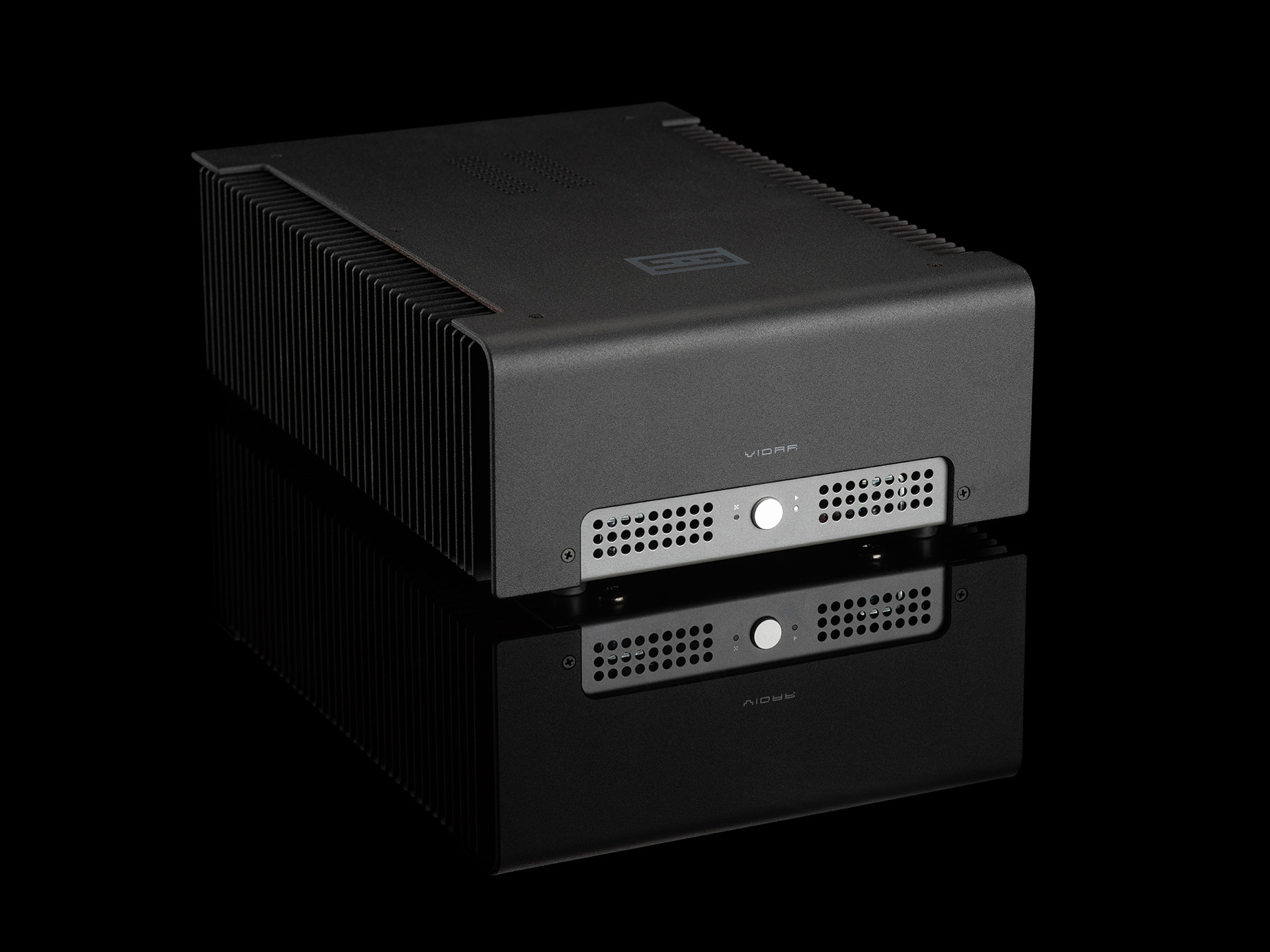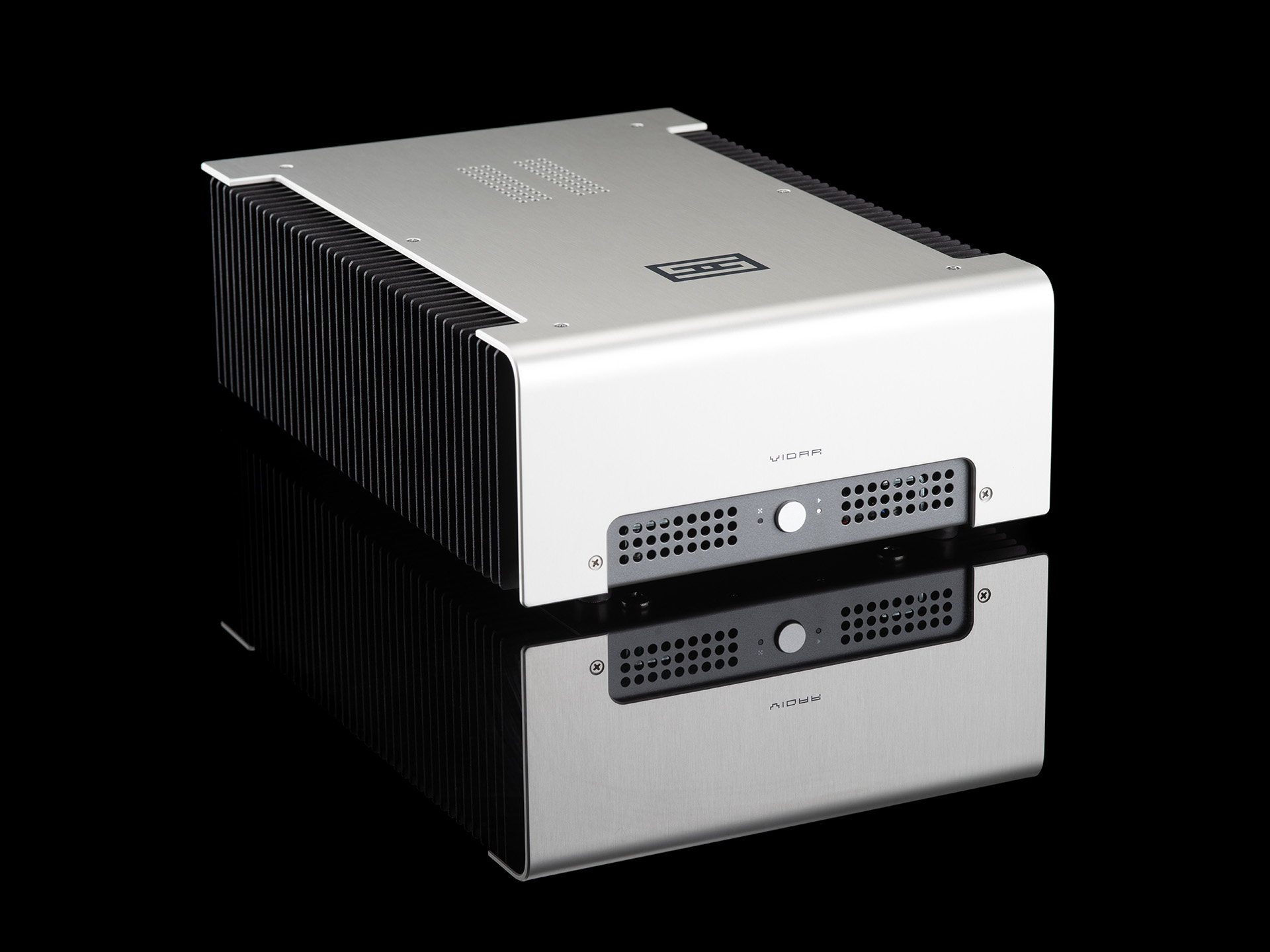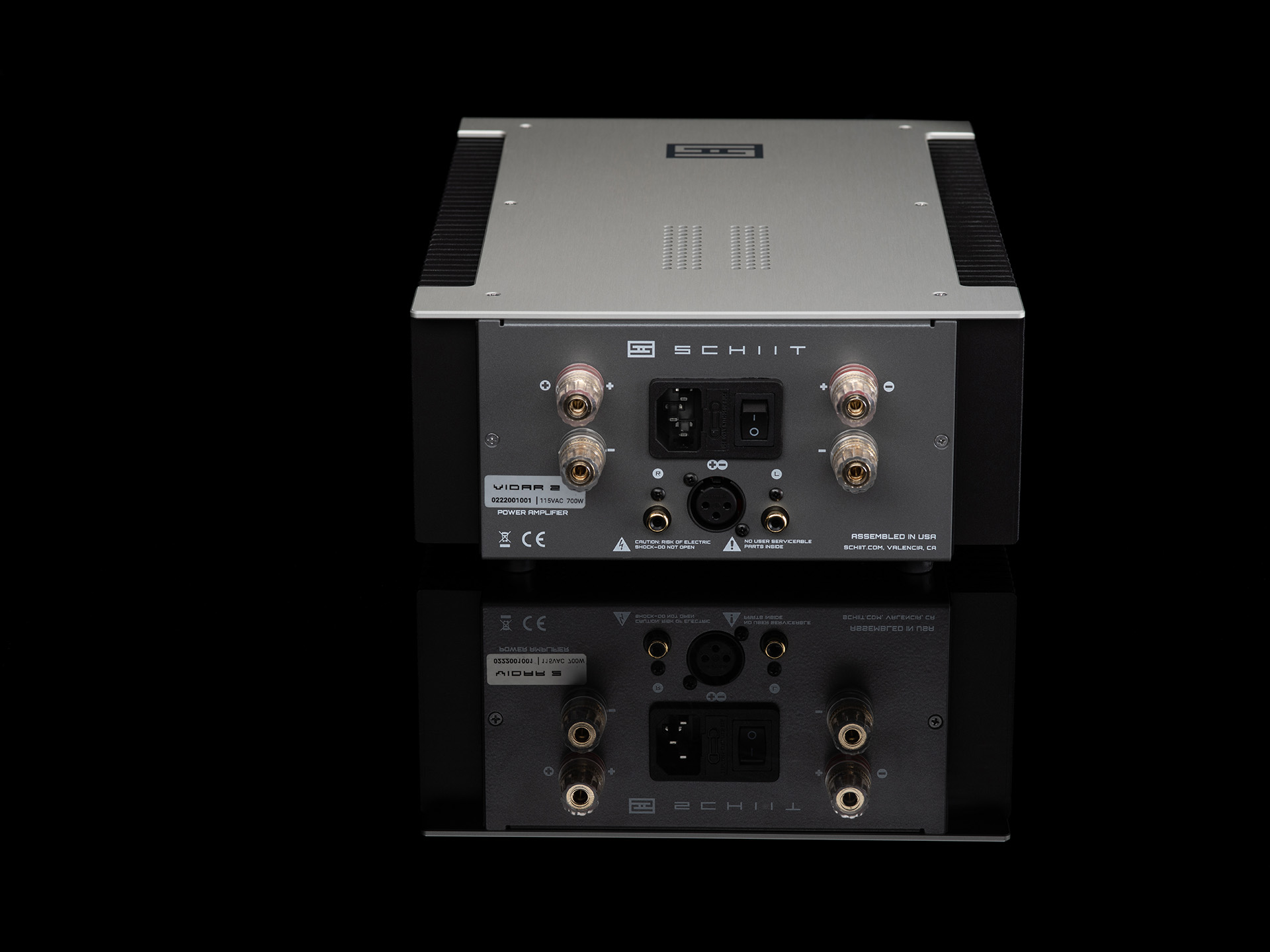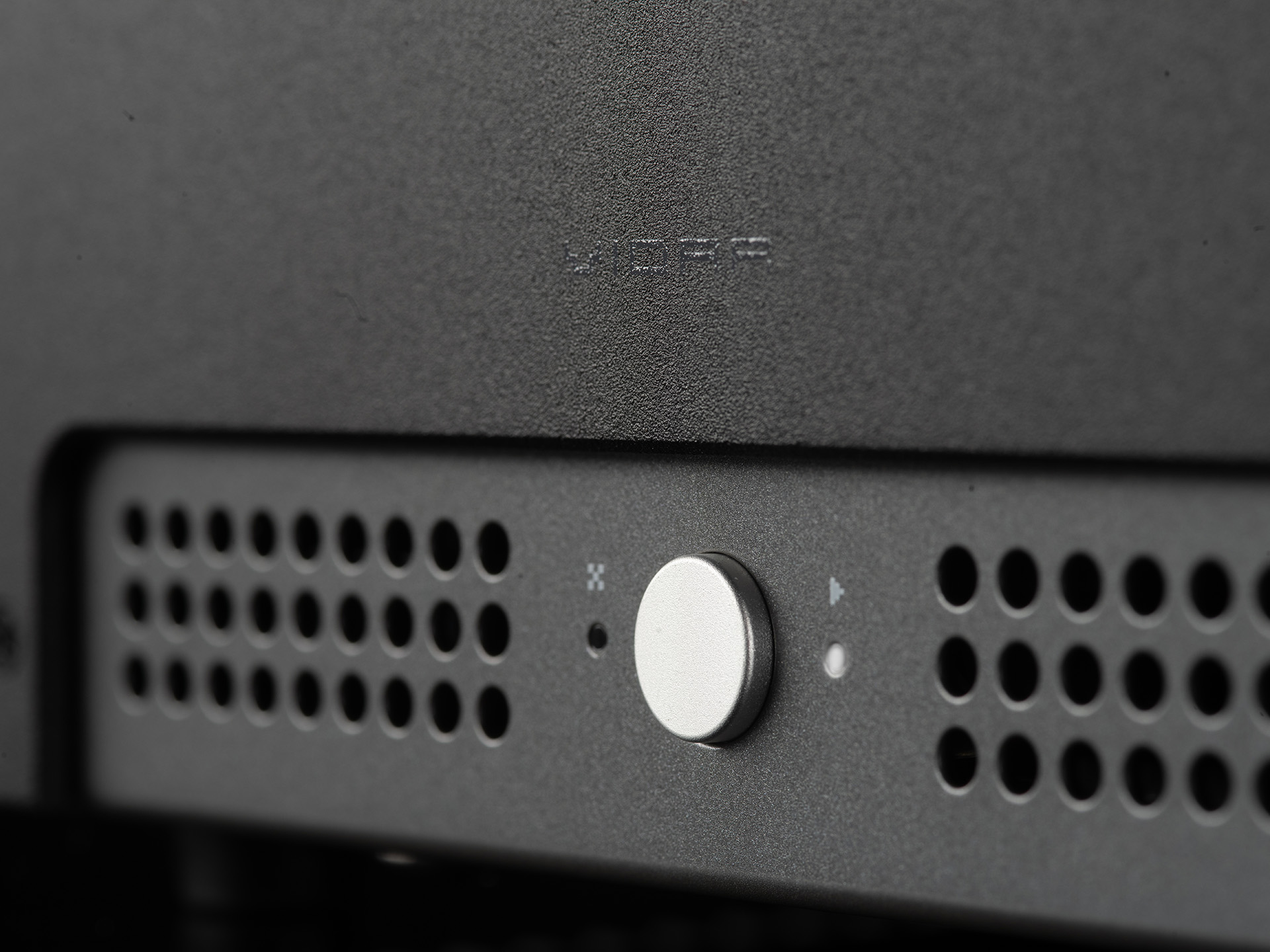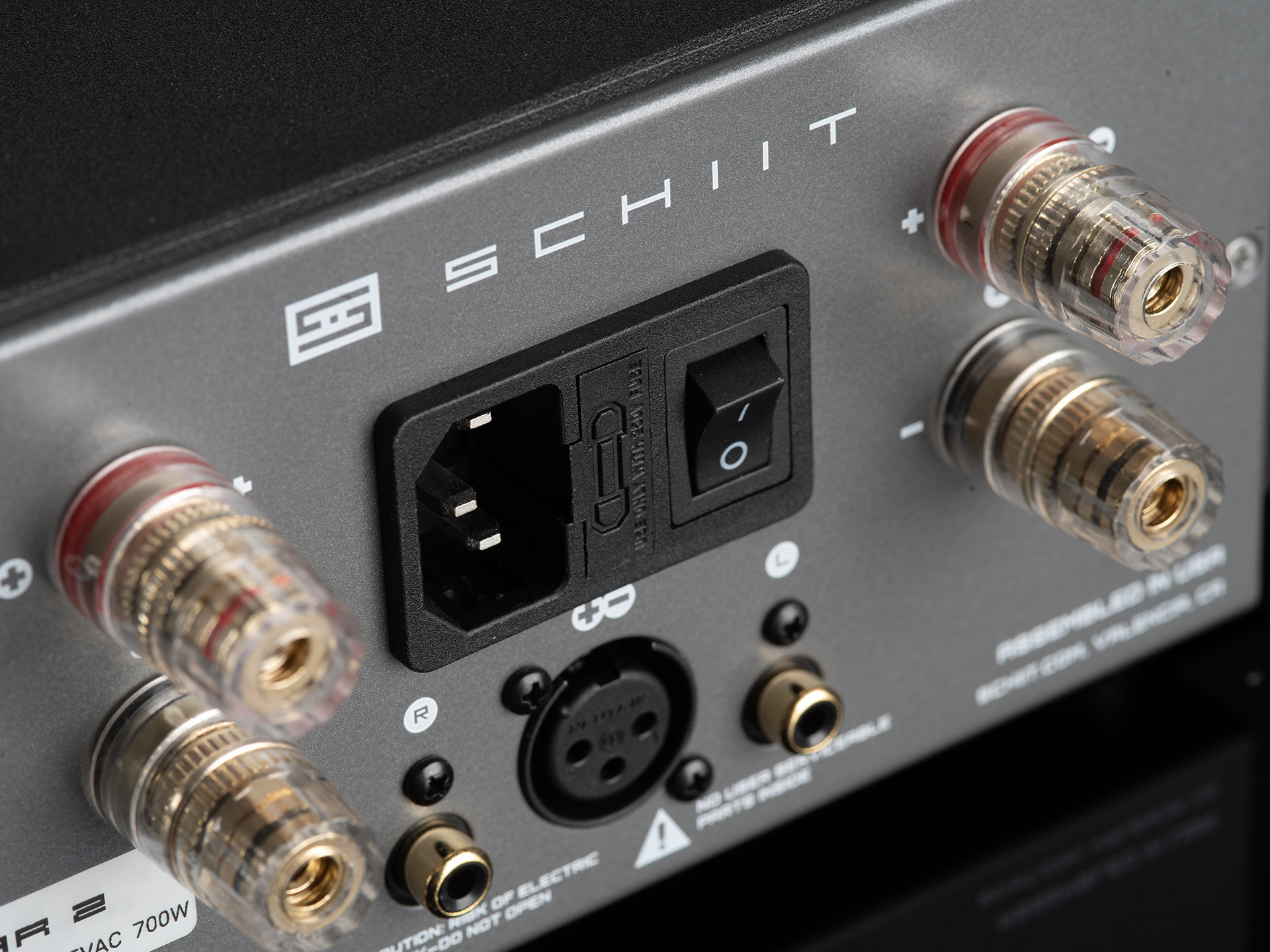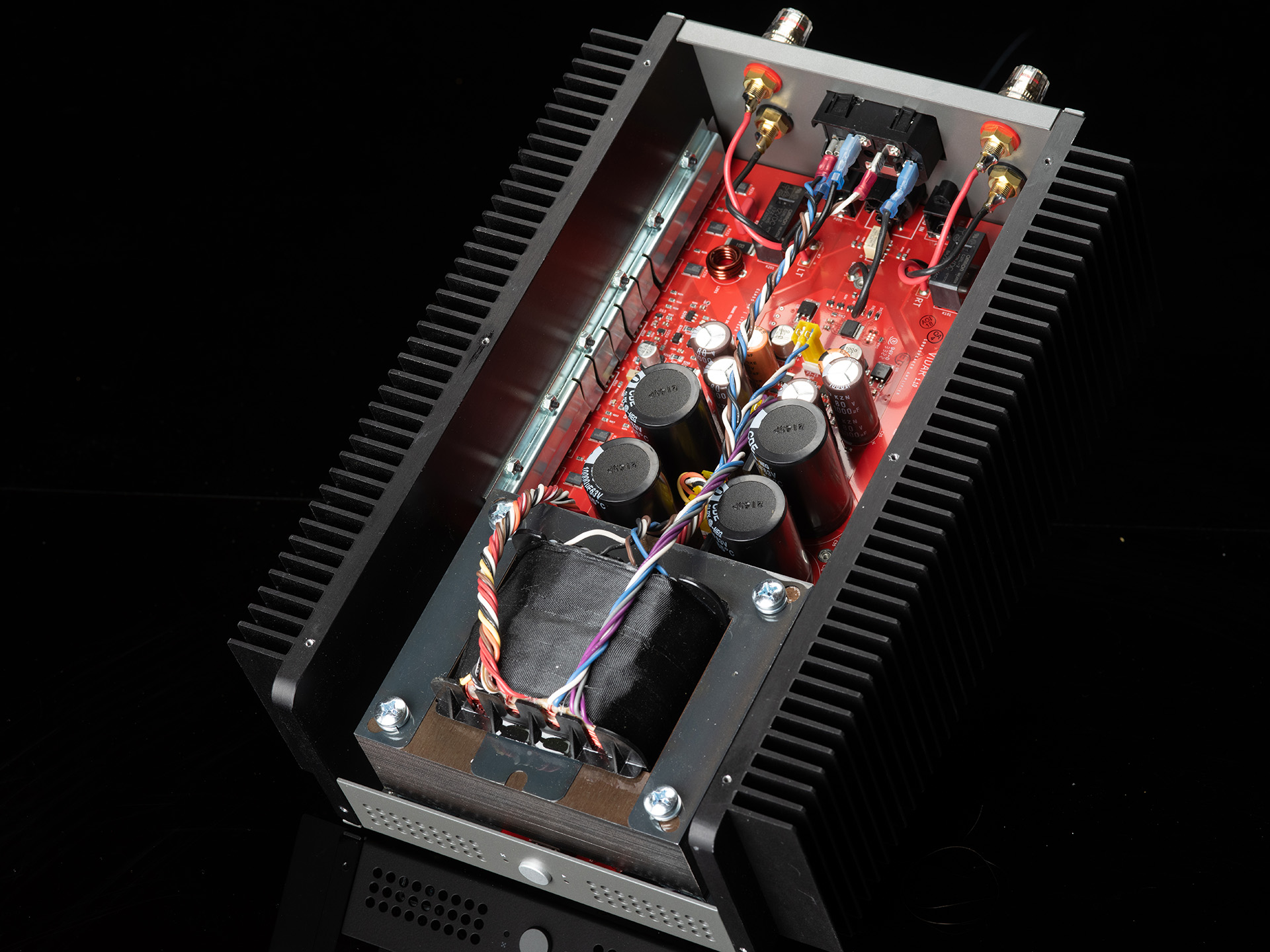Power Output:
Stereo, 8 Ohms: 100W RMS per channel
Stereo, 4 Ohms: 200W RMS per channel
Mono, 8 ohms: 400W RMS
Frequency Response: 20Hz-20Khz, +/-0.03db, 3Hz-500KHz, +/-3dB
THD: <0.004%, 20Hz-20KHz, at 100W RMS into 8 ohms
IMD: <0.005%, CCIR, at 100W RMS into 8 ohms
SNR: >123dB, A-weighted, referenced to full output
Damping Factor: >100 into 8 ohms, 20-20kHz
Gain: 20 (26dB)
Input Sensitivity: AKA Rated Output (Vrms)/Rated Gain. Or, 28V/20. You do the math.
Input Impedance: 22k ohms SE, 44k ohms balanced
Crosstalk: >90dB, 20-20kHz
Inputs: L/R RCA jacks for stereo input, single XLR for mono input
Topology: current feedback, fully complementary, all 2SC/2SA BJT, no capacitors in the signal path
Oversight: microprocessor-controlled monitoring and management of critical operational points, with with relay shut-down for overcurrent, thermal, and other faults
Power Supply: 600VA transformer with dual mono main rails, plus boosted, discrete CFP regulated supply to input, voltage gain and driver stages, plus separate, isolated and regulated rails for microprocessor management
Power Consumption: 700W maximum
Size: 9” x 13” x 3.875”
Weight: 22 lbs

